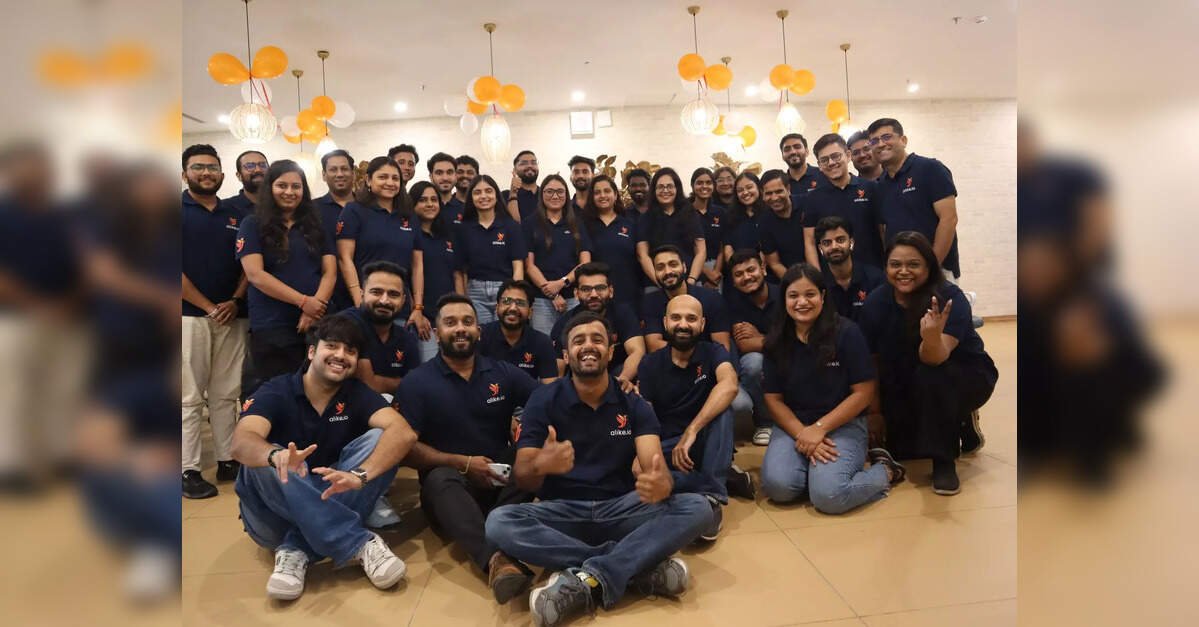Trip Planning
DIY Travel: How Self-Guided and Personalized Vacation Packages are Shaping the Future of Global Tourism- Check Out The Destinations Now

Published on
August 21, 2025
The world of travel and tourism has undergone a significant shift in recent years, with a growing trend toward personalized, self-directed vacations. More travelers are now opting for DIY-style trips, where they design their itineraries, select their accommodations, and experience destinations on their terms. This move away from traditional package tours has given rise to a new type of vacation that emphasizes flexibility, autonomy, and customized experiences.
DIY-style vacations are empowering travelers to take control of their trips, offering them the freedom to explore destinations at their own pace, without the constraints of guided tours or set schedules. This trend is becoming increasingly popular as technology continues to play a role in facilitating easier trip planning, enabling travelers to create bespoke experiences tailored to their preferences. The result is a growing demand for self-guided vacations that allow individuals to immerse themselves in destinations on a deeper level, free from the traditional tourist traps.
The Appeal of DIY Travel
There are several key reasons behind the growing popularity of DIY-style vacations. One of the main factors is the desire for greater control over the travel experience. Travelers now want more flexibility, especially after the restrictions and rigid structures of the past few years. They no longer want to be tied to pre-arranged itineraries that limit their freedom to explore and adapt as needed. Instead, many are seeking out experiences that reflect their personal interests, whether it’s adventure travel, cultural immersion, or leisurely exploration.
The ability to curate a trip based on individual preferences is also appealing. With the rise of online tools and apps, planning a DIY vacation has never been easier. Travelers can easily research destinations, book accommodations, and even schedule activities based on their own preferences and budget. This level of customization has resonated with younger generations, who prioritize unique, memorable experiences over traditional tourist destinations.
Another driving force behind the popularity of DIY-style vacations is the sense of adventure they offer. Traveling without a fixed itinerary can lead to spontaneous discoveries and unexpected experiences. Whether it’s stumbling upon a hidden café in Paris or discovering a quiet beach in Thailand, DIY travel allows for the joy of surprise and the opportunity to connect with places and people in ways that are often lost in more structured, guided tours.
Technology and the Evolution of DIY Travel
Technology has played a pivotal role in the growth of DIY-style vacations. Digital tools have made it easier for travelers to plan and execute their trips without relying on travel agencies or traditional tour operators. Websites, mobile apps, and social media platforms provide a wealth of information about destinations, accommodation options, and local experiences. Travelers can research their ideal vacation spot, compare prices, and even book their entire trip from the convenience of their smartphones.
Customizable vacation packages are now widely available online, with many travel companies offering flexible options that allow travelers to handpick their flights, hotels, and activities. This move toward personalization is driven by the increasing demand for tailored travel experiences. Instead of purchasing a one-size-fits-all package, tourists are now able to design trips that align with their unique interests, whether they’re looking for a relaxing beach holiday, a cultural city tour, or an outdoor adventure.
Social media and travel blogs also play a major role in the rise of DIY-style vacations. Platforms like Instagram and Pinterest have inspired travelers to seek out unique, off-the-beaten-path destinations, and travel influencers often share detailed itineraries and travel tips, making it easier for others to plan their own self-guided trips. The wealth of user-generated content available online has provided a new avenue for discovering destinations and planning vacations independently.
Popular DIY Vacation Destinations
As more people seek to create their own travel experiences, certain destinations have emerged as top choices for DIY vacations. These locations offer a combination of accessibility, diverse activities, and the opportunity for self-guided exploration.
- Iceland
Iceland is one of the most popular destinations for DIY-style vacations, thanks to its stunning natural beauty and relatively easy accessibility. Travelers can explore the country’s famous Golden Circle route, visit the Blue Lagoon, or venture off the beaten path to discover hidden waterfalls, glaciers, and volcanic landscapes. The country’s well-developed infrastructure makes it easy for tourists to navigate without the need for guided tours. Iceland’s compact size and the freedom to rent a car make it an ideal destination for those looking to create their own itinerary. - Italy
Italy is another favorite among DIY travelers. From the bustling streets of Rome to the tranquil canals of Venice, the country offers an abundance of experiences for every type of traveler. Tourists can easily customize their trip to focus on art, history, food, or outdoor adventures. The extensive train network in Italy allows for flexible travel between cities and regions, making it easy to explore at your own pace. Whether it’s a week in the Amalfi Coast or a few days exploring Tuscany’s vineyards, Italy offers endless opportunities for self-guided exploration. - Thailand
For those seeking an exotic getaway, Thailand is an ideal destination for DIY travel. Whether it’s the lively streets of Bangkok, the serene islands of Koh Samui, or the cultural richness of Chiang Mai, Thailand has something for everyone. The country’s affordable accommodation and easy transportation options make it simple to create an itinerary that suits individual preferences. DIY travelers can take part in cooking classes, visit ancient temples, or simply relax on the country’s pristine beaches. Thailand’s vibrant culture and stunning landscapes make it an unforgettable destination for self-guided trips. - New Zealand
Known for its breathtaking landscapes and outdoor adventures, New Zealand has become a go-to destination for DIY travelers looking for an active vacation. From hiking the famous Milford Track to exploring the geothermal areas of Rotorua, New Zealand offers endless opportunities for adventure. The country’s well-maintained infrastructure and easy-to-follow trails make it a perfect place for those seeking to plan their own outdoor activities. Whether it’s a road trip through the South Island or a visit to the North Island’s cultural landmarks, New Zealand offers the perfect mix of exploration and relaxation. - Portugal
Portugal has become an increasingly popular destination for DIY-style vacations, thanks to its mix of stunning coastlines, historic cities, and vibrant culture. Travelers can explore Lisbon’s picturesque streets, visit the wine regions of Porto, or relax on the beaches of the Algarve. Portugal’s affordable prices and easy transportation options make it an ideal destination for self-guided tours. Whether it’s a foodie journey through the country’s culinary delights or an exploration of its historic towns, Portugal offers a diverse range of experiences for DIY travelers.
The Benefits of DIY Travel for the Tourism Industry
The rise of DIY-style vacations has had a significant impact on the travel and tourism industry, encouraging the development of new services and products designed to cater to the needs of self-guided travelers. As more people embrace the idea of creating their own itineraries, destinations are adapting by offering more flexible booking options, personalized experiences, and greater transparency in pricing.
For tourism providers, embracing the DIY travel trend means offering more customizable packages, as well as enhancing digital platforms that allow travelers to independently research and plan their trips. Hotels, airlines, and activity providers are also adapting to this shift by offering more flexible services that allow tourists to book on their own terms.
Additionally, the demand for self-guided vacations is leading to a rise in sustainable tourism. By giving travelers the flexibility to choose off-the-beaten-path destinations, the tourism industry can help reduce overcrowding in popular tourist spots, spreading the benefits of tourism to lesser-known areas. This shift is helping to promote more responsible and sustainable travel practices, which is crucial in protecting the environment and preserving local cultures.
The Future of DIY Travel
As more travelers seek personalized, flexible vacation experiences, the future of DIY-style vacations looks bright. The continued growth of digital platforms, along with the increasing desire for authentic and tailored experiences, will likely drive the expansion of this trend. In the coming years, we can expect more destinations to cater specifically to DIY travelers, offering unique experiences that can’t be found in traditional package tours.
The role of technology will continue to be a key factor in the evolution of DIY travel. As artificial intelligence and data analytics improve, travelers will have access to even more personalized recommendations and itineraries. Virtual reality and augmented reality may also play a role in enhancing the planning process, allowing travelers to virtually explore destinations before booking their trips.
Moreover, as travelers increasingly seek sustainable and responsible ways to explore the world, DIY travel will likely align with these values, offering more opportunities to explore lesser-known destinations and engage in environmentally conscious travel practices.
Conclusion: A Personalized Approach to Travel
DIY-style vacations are revolutionizing the travel industry by offering a more personalized and flexible approach to exploring the world. Travelers now have the power to create their own itineraries, choose their accommodations, and select activities that align with their interests and preferences. This trend is reshaping the way people think about vacations, moving away from the constraints of guided tours and pre-arranged packages.
As technology continues to play a crucial role in the growth of DIY travel, the future of tourism looks increasingly individualized and customizable. With destinations around the world embracing this shift, the travel industry is poised to offer more unique, memorable experiences that cater to the growing demand for self-guided exploration.
Trip Planning
Tips from a London student who made it back alive

While studying abroad can be one of the most rewarding university experiences, it can also be one of the most stressful. After months of drowning in paperwork and Visa applications (thanks Brexit), it’s easy to forget all of the excitement that made you sign up in the first place.
To reinvigorate that excitement and take some stress out of the lengthy prep period, we’ve compiled a list of tips on how to prepare for your trip and make the most of the experience.
1. Don’t live alone
The easiest way to meet people is by living with them. It might feel risky moving in with strangers, but it’s no riskier than moving into first year halls, especially if you use student-frequented sites like HousingAnywhere, Spotahome or Uniplaces.
Even if you end up with a nightmare flatmate, is there any better way to bond with your other flatmates than having a common frustration to vent about? Getting home late at night is much safer when you’re going back to the same address too, and there’s nothing better than having your closest friends across the corridor for late night chats and spontaneous outings.
2. Don’t rely on confusing embassy websites
If you’re struggling with your Visa application, the only advice you’ll get from your uni is to look at the embassy website. While we might be living in the age of digital nomads and AI travel guides, embassy websites seem to be stuck in 2008.
Get in touch with someone who’s already worked or studied in your host country, especially if you’re struggling to decode which documents you actually need. You might not know anyone already, but you can ask your uni to put you in touch with a final year student who went there. I promise you’ll get much more straightforward answers and avoid paying for documents and procedures you don’t need.
It’s also worth noting that not everyone will have to apply for their Visa at a London embassy. Depending on your home address and host country, you might be required to apply through an embassy in Manchester, Birmingham, Belfast, Cardiff or Edinburgh – make sure to double check before making unnecessary trips to the capital.
3. Get chatting with the locals
Nobody knows an area better than the people who’ve spent their whole lives there. You might have tried to scope out your new home on Google Maps, Tripadvisor or social media, but in most parts of the world, it’s the places you can’t find online that give you a real taste of the local culture.
Chatting with locals also helps with getting over the feeling of being an outsider that often comes alongside culture shock. Having local friends can help you to feel like you’re a part of the community you live in, and they’ll be much more reliable than Google when it comes to answering any questions you might have about the area and culture.
4. Make use of international networks
That said, it can also be great to have friends who are in the same position as you. International student organisations such as the Erasmus Student Network (which you can usually still join as a non-Erasmus international student) often have jam-packed weekly schedules with club nights, speed friending events, and trips around your host country, as well as trips abroad like the famous ESN Ibiza trip.
Research the international groups in your host city before you arrive, because the first couple of weeks are often the busiest. Think of it like an overseas Freshers’ Week: Themed club nights, bar crawls, and a fun introduction to your new home.
5. Sort important admin ASAP
The Visa application process can have a lot of unexpected delays, so it’s important to apply with plenty of spare time. Depending on the requirements of your host country, you might have to apply for things like medical certificates and criminal records, which can take a while to be processed, not to mention getting documents notarised, apostilled or translated. Most countries allow you to apply for your Visa up to six months before you’re set to enter the country, so you’ve got time to get ahead of your admin.
If you’re planning on applying for a study visa after you’ve already moved to your host country, it’s especially important to get everything sorted as soon as possible. You don’t want to end up running out of your tourist-visit allowance and having to leave the country halfway through your placement – it’s best to avoid this option entirely. If you’re doing two separate placements with two separate visas and you’re worried about having enough time to apply for the second one, you could look into applying via the embassy in your first country, or paying for a fast-track service with the UK embassy.
6. Learn some of the local language
If you haven’t studied your host country’s language as part of your studies, or you’re travelling to a multilingual country, it’s definitely a good idea to learn some daily phrases in the local language. Even if you’re going somewhere where English is widely spoken, locals might be more friendly if you at least try to speak to them in their own language, and it’s often seen as being a bit rude if you assume they’ll speak English.
Simple phrases like hello, goodbye, please and thank you are great, but also think about what you’ll be doing on a daily basis – things like ordering coffee, getting a ticket for the bus, and asking “can I pay with card”, or “can I have a bag” at the supermarket. Have a translator app such as DeepL ready on your phone to deal with any miscommunications.
7. Take some mini toiletries, snacks and local currency
This is the number-one tip to follow for long-haul destinations. After a long day of travel, the first thing you’ll want to do is shower, and the last thing you’ll want to do is go shopping. Bringing some mini toiletries can make all the difference to your first night in your new home; you can feel fresh and clean when you’re meeting your housemates and having that first sleep in your new bed.
Not every country has 24-hour corner shops, so it’s good to have some snacks on hand if you’re arriving late at night. Local currency is another essential, too: Not everywhere in the world has adapted to card payments and Apple Pay like the UK has, so it’s best to have a bit of cash on you when you arrive.
8. Travel outside your host city
One upside – or maybe downside – of living in the UK is that public transport abroad will almost always seem cheap as chips. Make the most of your host country’s rail or coach networks and use the weekends to explore outside of the city or town you’re living in.
If you’re going further afield, maybe try to put a bit of extra money aside to explore other countries in the surrounding region. Even if you have to fly, it’ll probably be much cheaper than it would be to fly there from the UK. Some regions also have sleeper trains or buses to surrounding countries, which can be a really cool way to get around without spending too much money.
9. Consider unexpected costs in your budget
One of the best things about going abroad and meeting new people is the spontaneous plans, whether it’s meeting people at a club and agreeing to join them for a beach trip the next day, invites to parties at strangers’ flats, or unplanned trips exploring the region around your host city.
With unexpected fun comes unexpected costs, and it’s important to have some wiggle room in your budget so that you don’t have to turn down plans. If your budget needs a top-up and your Visa doesn’t allow you to work in your host country, maybe try looking into online tutoring or other remote jobs.
10. Dive in headfirst
While it’s important to let yourself settle in, don’t wait too long to start making the most of what your host city has to offer. Remember the end of term will be exam time for a lot of people, and even if you’re not too stressed, your friends might be – some unis such as St Andrews actually count year abroad marks into overall degree classification.
If your placement lasts at least a couple of months, there’s a good chance you’ll also have the benefit of being there outside of the tourist season. Make the most of the emptier streets and lower prices before holidaymakers flood in, and enjoy feeling like a smug local when they ask you for directions.
11. Research cultural differences before you arrive
A little bit of culture shock is probably unavoidable, especially if you’re going somewhere a bit further afield. Even if you’re well travelled, it’s a whole different kettle of fish when you’re living somewhere.
Researching things like food (not just traditional dishes but typical supermarket stock too), clothing, and religion can help with adjusting to your host country. Daily routines are also worth looking into: I had a shock when lectures at my Spanish university started as early as 7:30am and finished as late as 8:30pm.
Another thing to consider is the type of city or town you’re staying in. If you’re going to a bustling European capital, you’ll probably adjust quite quickly after living in London. But if you’re going to a small town or smaller city, you might find it difficult to get used to, especially if you grew up in a big city too. Make sure to stay open minded; smaller towns and cities are often better for cultural immersion and community, even if they might not have as much going on as bigger cities.
12. Pick easy modules over interesting ones
One of the benefits of studying abroad is the opportunity to pick from a wider range of modules than your usual program diet might allow. However, it’s important to remember that other countries’ educations systems can be very different. There’s a good chance you’ll have to get used to new ways of writing essays, new assessment formats, different expectations of student-teacher relationships, and different levels of access to resources. Some unis might not have Moodle-equivalent online platforms and you might have to rely solely on your own notes when it comes to revision time.
With that in mind, you might want to think about picking modules based on how confident you are on their content, rather than on how interesting they sound, especially if your year abroad marks count towards your degree. This advice is doubled if you’ll be taking modules taught in a different language: Studying unfamiliar content can be difficult when you don’t have the specific vocabulary needed. Typing an unfamiliar word into a translator only for it to be the same in English is always a humbling moment.
13. Don’t book your return flights until you’re there
Exam resits, local festivals, friends going travelling – there’s myriad reasons you might want to stay longer than your placement end date. You might also find yourself more than ready to go home, especially if you haven’t been able to make any trips back during your placement.
It’s not a good idea to book your return flight at the last minute, particularly if it’s in the summer or just before Christmas, but the prices are unlikely to change much if you wait until a month or two before your placement ends. If you’re studying, you can also get a better idea of your term dates, which are often listed on official documents to include the entire exam term. Your final exam could be weeks before the official end of term and you might not want to stay too long if everyone else is leaving.
14. Take something that reminds you of home
Finally, don’t forget to take a little bit of something for when you’re craving some familiarity. Even if you’re the most adventurous person in the world, you might get a bit overwhelmed by the culture shock and new people, especially in the first week or so. Whether it’s your favourite mug, a stuffed animal or a jumbo pack of Yorkshire Tea, having something small to remind you of home is never a bad idea.
Trip Planning
Turn Your Travel Memories into Timeless Canvas Prints

Trip Planning
Alike’s AI-Powered Trip Planner, ETTravelWorld

Alike, the travel-tech platform focused on simplifying global holidays for modern Indian travellers, has launched Eia, its next-generation AI Trip Planner. Designed as an intelligent tool for seamless international trip planning and booking, Eia brings a more personal and flexible approach to organising travel.
Unlike traditional platforms that promote fixed packages, Eia allows travellers to customise every aspect of their journey. The AI-driven system generates tailored itineraries based on preferences, interests, and schedules, providing day-wise plans complete with timings, maps, and recommendations. With features such as real-time collaboration, multiple planning views, and instant booking integration, Eia is positioned as an all-in-one solution for today’s travellers.
“Travel planning should not feel like admin work, it should feel like the first step of the journey itself,” said Ashish Sidhra, Co-founder at Alike. “What makes Eia different is simple. Our AI does not push packages or rigid itineraries, it assists you with ideas, inspiration and suggestions that fit you. You can plan everything here and still book anywhere you want. That freedom – to explore on your terms, is what sets Eia apart. It is the closest thing travellers will find to having a personal travel companion, powered by AI.”
The platform allows travellers to plan trips collaboratively, making it particularly suitable for group holidays. Users can co-create itineraries in a shared digital space and visualise their plans through different formats such as calendars, timelines, maps, or agendas. Eia also integrates AI chat support for real-time travel queries, alongside access to Alike’s verified advisors for expert recommendations and pricing support.
When it comes to booking, Eia’s flexibility is a defining feature. Travellers can instantly convert itineraries into confirmed bookings without navigating multiple websites or applications. The platform integrates planning and booking within a single dashboard, streamlining the process and reducing complexity.
By combining intelligent planning with seamless booking, Alike aims to meet the evolving expectations of Indian travellers, who increasingly value personalisation and autonomy in how they explore the world. With Eia, the company is positioning itself at the intersection of technology, convenience, and traveller empowerment.
-

 Brand Stories1 month ago
Brand Stories1 month agoBloom Hotels: A Modern Vision of Hospitality Redefining Travel
-

 Brand Stories1 month ago
Brand Stories1 month agoCheQin.ai sets a new standard for hotel booking with its AI capabilities: empowering travellers to bargain, choose the best, and book with clarity.
-

 Destinations & Things To Do1 month ago
Destinations & Things To Do1 month agoThis Hidden Beach in India Glows at Night-But Only in One Secret Season
-

 Destinations & Things To Do1 month ago
Destinations & Things To Do1 month agoUntouched Destinations: Stunning Hidden Gems You Must Visit
-

 AI in Travel1 month ago
AI in Travel1 month agoAI Travel Revolution: Must-Have Guide to the Best Experience
-

 Family Travel2 months ago
Family Travel2 months agoThings to Do Indoors in New Jersey
-

 Brand Stories2 months ago
Brand Stories2 months agoVoice AI Startup ElevenLabs Plans to Add Hubs Around the World
-

 Brand Stories1 month ago
Brand Stories1 month agoContactless Hospitality: Why Remote Management Technology Is Key to Seamless Guest Experiences
-

 Restaurants & Food5 months ago
Restaurants & Food5 months ago10 New Restaurants In Delhi NCR To Head To This Month
-

 Brand Stories2 months ago
Brand Stories2 months agoHow Elon Musk’s rogue Grok chatbot became a cautionary AI tale













You must be logged in to post a comment Login